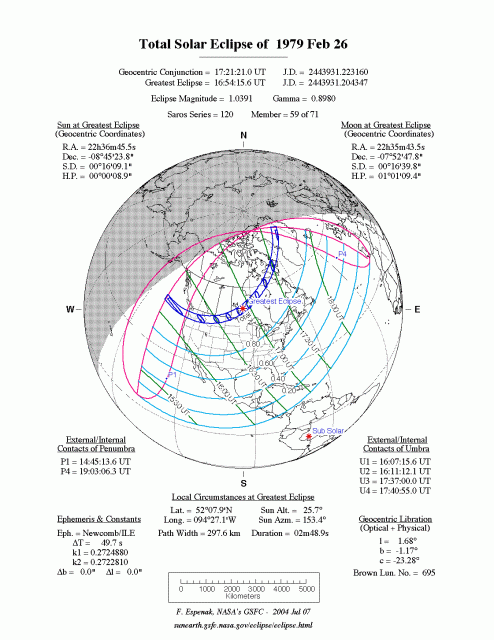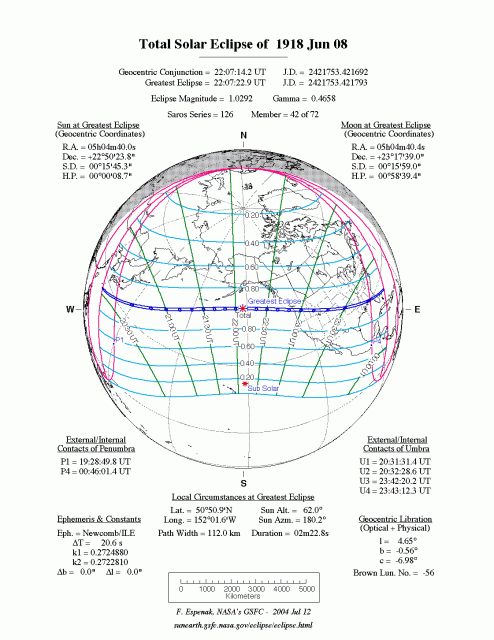The Great American Solar Eclipse of August 21, 2017
Solar eclipses occur at the new moon when the moon passes directly between the earth and the sun. They are rather common, with about 24 occuring in this decade. A quarter of them (6) are total eclipses where the moon blocks the solar disk entirely. These occur when the moon is closest to the earth in its orbit and thus appears larger on the surface of the earth. When the moon is farthest away and as it passes in front of the sun, it appears smaller than the solar disk. The result is an annular eclipse (7 times this decade). These eclipses produce a ring of brightness around the dark shadow of the moon.
The location of the shadow on the earth varies with the slight variances of the moon’s orbital path versus the earth's orbit around the sun. As a result, total solar eclipses are rare across the United States (or at any given point on the earth), as the only occur in a small area. The last total eclipse was February 26, 1979, when the path of totality stretched through the northwestern states of Washington, Oregon, Idaho, Montana, North Dakota, and the Canadian provinces of Saskatchewan, Manitoba, Ontario and Quebec.

The last time the U.S. experienced a coast-to-coast solar eclipse was in June of 1918, when the path of totality stretched from Washington to Florida.
